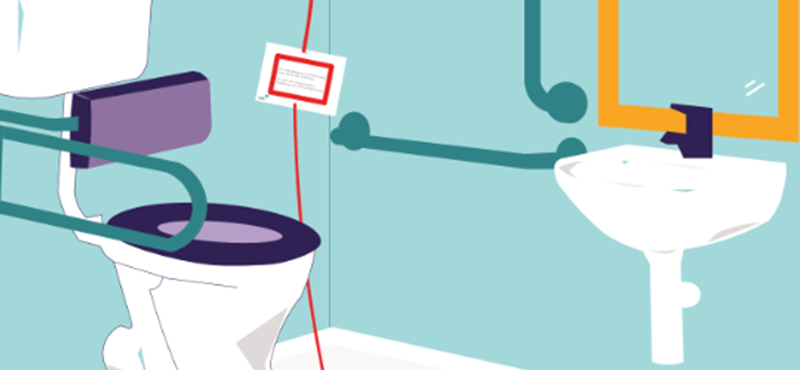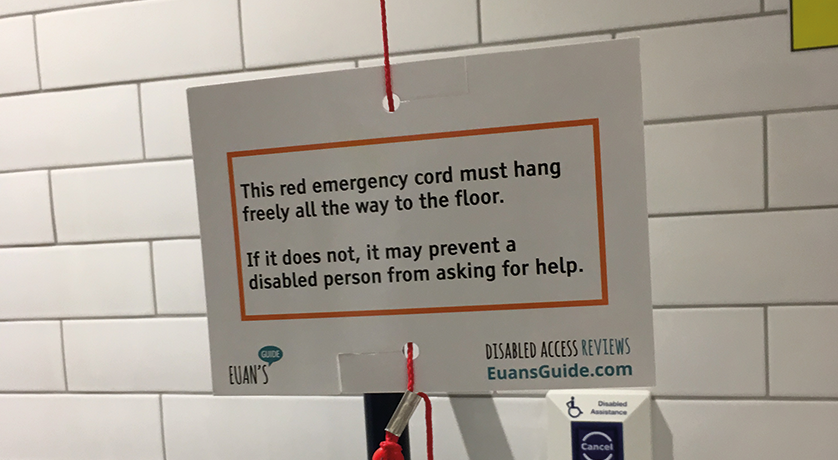Loo-sing Business

Survey reveals the need for accessible toilet improvements
Many places could still be losing out on valuable income simply by not providing an accessible toilet. Our Accessible Toilet Survey revealed that 78% of participants have avoided going somewhere that did not have an accessible toilet. These venues are potentially missing out on a portion of the £274 billion annual spending power of families including at least one disabled person.1
Even when somewhere says it does provide a toilet for disabled people it unfortunately does not mean it is going to be accessible. 78% of disabled people surveyed have come across an accessible toilet they were unable to enter.
Narrow corridors, small spaces, heavy or locked doors, and the need to climb stairs or rely on a working lift could all be factors making a toilet designed for disabled people instantly inaccessible. A lack of Changing Places toilets also contributes to the problem. The additional facilities found in these toilets are used by around 250,000 people in the UK, yet there are only around 1,500 Changing Places installed in public places.
While the lack of accessible toilets or having toilets located in an unsuitable location will require building work to fix, there many improvements venues can make without structural changes. Things like ensuring the toilets are cleaned and checked by staff regularly, ensuring all the equipment is kept in good working order and removing any unnecessary items to help free up space.
Far to often accessible toilets are misused as storage cupboards. This can be a major tripping hazard and it can also mean that wheelchair users do not have enough space to turn around or transfer from their wheelchair to the toilet. Sometimes the problem can be overly large bins used in a small space, other times it can be much stranger, like coming face to face with Darth Vader blocking your path – unfortunately this actually happened!2
The three most common problems with accessible toilets:
- Dirty
- Not enough space
- Too many things in the way making it difficult to manoeuvre
The Accessible Toilet Survey report
Accessible Toilet Survey text only Word Document
Accessible Toilet Survey Easy Read
A note on the alarm
To keep your toilet in the best condition it is important to educate staff on the equipment inside it. Explain what it is there for, how it works and how it should look. One element that is often overlooked is the red emergency cord. Red emergency cords are designed to be a way for someone inside the accessible toilet to safety and easily alert people outside the facilities that their assistance is required. It becomes useless if the alarm is not working, staff do not respond to the alarm or the cord is unreachable when someone needs to use it. Cords should be in a position that they could be pulled if someone fell to the ground. Often they are cut too short, tied up or placed out of reach. Sometimes they are not there at all. 61% of our survey participants said that they see a red emergency cord that is potentially dangerous in an accessible toilet at least once a month.

Image of: A red emergency cord in an accessible toilet with a Red Cord Card attached to it.
How individuals can get Red Cord Cards
How venues can order Red Cord Cards
Why did we write this article?
Every year around World Toilet Day (19th November), we try to highlight the issues faced by disabled people when they need to use a toilets when they are out and about. Whether it’s tied up red emergency cords, misuse or indeed the lack of accessible loos out there, we use this day to raise awareness and drive change.
The more people share this article, the more places we can reach to make inaccessible accessible toilets a thing of the past.
How we can help venues
- Venues can list their disabled access information on Euan’s Guide for free, making it easier for people to find the information they are looking for before they visit. It also helps venues gain feedback from reviews of changes you could make to improve your disabled access.
- By signing up to our venue mailing list you can get regular updates and ideas to help you keep improving your disabled access over time.
- Browse the venues section for more top tips and to order Red Cord Cards or more venue resources to help show that you care about your disabled access.
- Donate to support our charity on our mission to improve access for disabled people.
1 Figure taken from Scope.org.uk
2 A survey participant told us they found a life sized Darth Vader cardboard cutout inside an accessible toilet.


 Follow Euan's Guide on Instagram
Follow Euan's Guide on Instagram
 Follow Euan's Guide on LinkedIn
Follow Euan's Guide on LinkedIn
 Follow Euan's Guide on Facebook
Follow Euan's Guide on Facebook


Comments
You have to be signed in to leave a comment.
Login / SignupRemus
HI Everyone! Thank you for your feedback to the Euan's Guide accessible toilet survey. Its always great to hear from our participants with helpful suggestions. It would be great if you could consider writing a review of any particular toilets you have visited on the Euan's Guide website This would also be a brilliant way to feedback your suggestions to particular venues. If you would like any help with getting started then please do get in touch by contacting hello@euansguide.com Thank you again for your support.
AmySilverston
I find the grab rails either side of the mirror are not in the right place for me. The one nearest toilet is too close and the furthest one is too far away. A bar in the shape of an H, with a horizontal running between the two vertical bars would mean there is always something within reach. This would require a minimum of alteration to the current design, merely a new grab bar that would screw into the wall in the same places as the existing ones. Yes, the horizontal bar would go in front of the mirror, but I don't think it would make a big difference to anyone using it. If you are disabled, vanity is the least of your problems! My professional background is in sales, marketing and advertising so I am quite prepared to campaign on this point, but to save time can someone suggest with whom should I start?
RobHeywood
My wife is a wheelchair user and one of the major problems that we have found in accessible toilets is the poor positioning of soap dispensers and hand dryers. My wife doesn't have very good upper body strength and finds it very difficult to operate the soap machines that have a bar (or button) that you have to press an automatic one would be much better. Hot air hand dryers are almost always set too high for a person in a chair to operate and to dry their hands effectively.